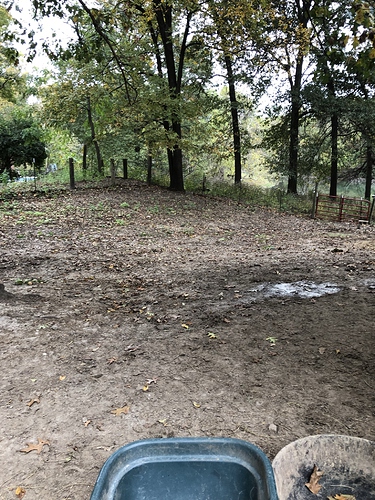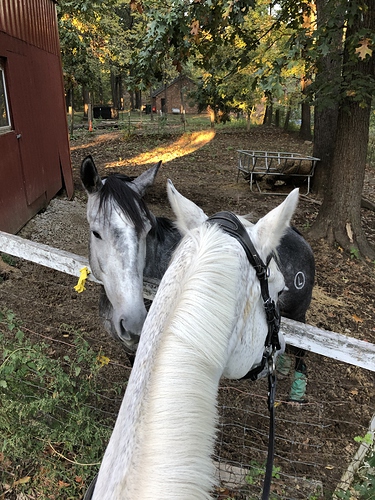Help!
Winter is finally here and somehow snuck up on me. With the “surgery horse” not allowed to be out in wet weather she has been confined to her stall for almost a week now, and with cold winter temps finally here the wet is here to stay (other horse would benefit from less mud as well). They have a relatively small (110 x 70-90ft) sacrifice lot that was (and eventually will be again) two separate area with a gate that stays open. The smaller area is flattER but both areas are hilly and slope in every which direction. I’m wanting to create mudfree areas in 3/4 places - a place for the roundbale feeder to site since they spend 80% of the time there, the main gate/ water trough area which are right by each other (eventually want all 4 gates to have a mudfree gravel pad on both sides of said gates), and then their favorite nap/ standing spot which is right behind our hay and shavings barn.
I know to do it correctly is time and money intensive and I’m short on both (as I want pony to be able to go outside sooner than later). I’m thinking use the box blade in tractor to scrape the crap/ mud/ hay mix out and away and drop a load of gravel then screenings or smaller gravel on top with some Timbers as a boarder on the slopier (hillier?) sections in an attempt to prevent washout. Again, I know it’s not ideal but I would be happy to get a few (3 would be ideal!) years out of that. Would that work? Is there a cheaper/ more effective but equally cost effective way?

 but regular soil yes its going to just sink.
but regular soil yes its going to just sink.

